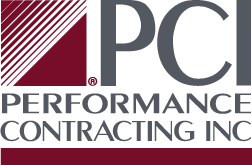Title Page
-
Electrical Inspection Checklist: Electric Vehicle Charging Equipment
This Electrical Inspection Checklist: Electric Vehicle Charging Equipment is engineered to provide an NEC compliant process to guide you in your safety inspections.
Electric vehicles are an increasingly popular form of transports and have seen both established manufacturers leaning toward them, while new emergent companies like Tesla also gain notoriety.
Electric cars are very powerful and, on a full charge, contain a large amount of energy. As such, it is important that we are able to provide a safe experience for users of electric cars. The first step to providing that is being able to maintain the equipment with effective inspection processes.
Record Inspection Details
-
Inspection date
-
Conducted by
-
Location to be inspected
-
Reason for inspection
-
Site Manager of Location
Run general inspection safety checklist
-
Make sure all equipment, devices, and fittings are listed. NEC: 625.5 Make sure everything is accounted for and present. If certain elements of equipment are missing, this can lead to problems with protection or other safety concerns.
-
Check the condition of the electric vehicle coupler NEC: 625.10 The coupler is a key movable part in the charging process. As such, it can be exposed to greater risk of damage or wear. Make sure the coupler is suitable for the job and that its condition meets safety standards.
-
Make sure coupler and cable safeguards have been provided NEC: 625.18, 625.19 Check that safeguards are in place or provided for the charging equipment. Leave your notes in the form field provided.
-
Verify the rating of branch-circuit and feeder overcurrent devices NEC: 625.40, 625.41 Make sure the ratings meet required standards.
-
Check for the provision of a personnel protection system<br><br>NEC: 625.22 <br><br>It is always important to prioritize personnel safety when conducting checks and inspections. Make sure the protection system in place is adequate and sufficient to meet the demands placed upon it.<br><br>
-
Check the location of disconnecting means Given that electric vehicles are very energy intensive pieces of equipment, the charging process utilizes a great deal of energy. For this reason, it's of vital importance to have adequate disconnecting means available. Check the location of disconnecting means rated over 60 amperes or 150 volts to the ground.
-
Make sure there are backfeed prevention provisions NEC: 625.46, 625.48 When charging an electric vehicle, we want to make sure power is only heading in one direction. Our backfeed prevention set up will help provide that there is no risk of reversed voltage polarity. Make sure the charging equipment is able to provide these suitable protections.
-
Height of charging equipment
-
Location of charging equipment
-
Assess the ventilation needs for any indoor charging equipment NEC: 625.15, 625.52 It is important to make sure that the location has been properly assessed for its ventilation needs. If ventilation is required then it should be in place, and the ventilation potential of the location should be held to an appropriate standard. Electric cars may be cleaner than the gas guzzling counterparts, but well-ventilated charging areas should still be maintained.
-
Overall notes regarding inspection
Sign off
-
Signature










